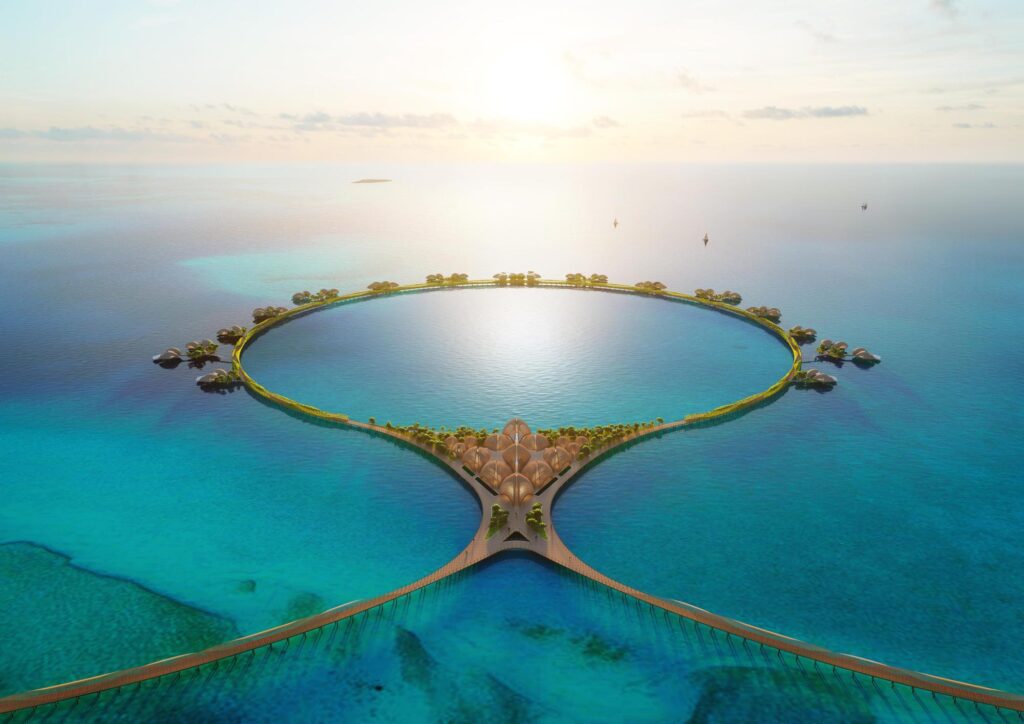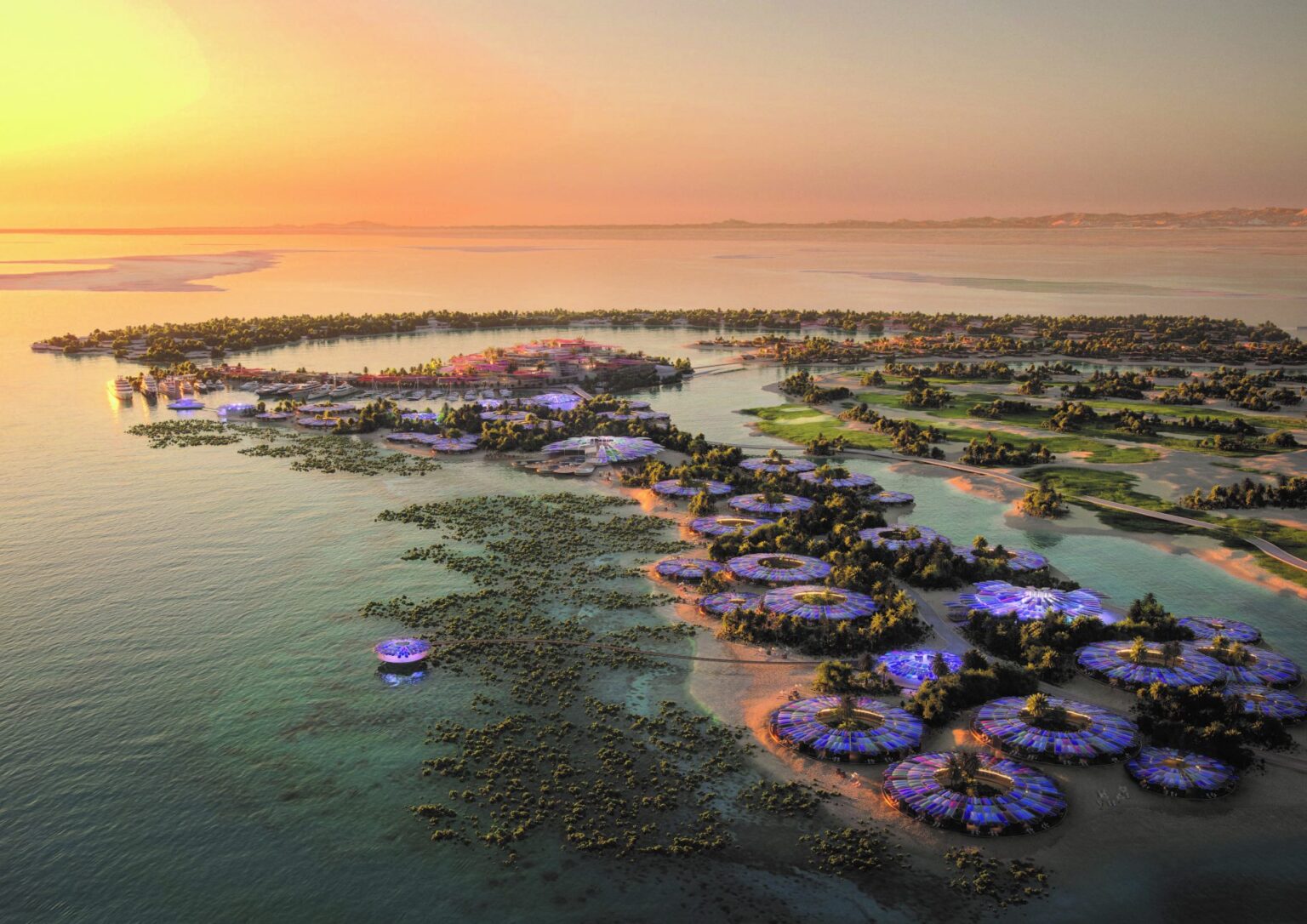Hanak, Tabuk — In a groundbreaking move towards sustainable aviation, Red Sea International Airport (RSI) has become the first in Saudi Arabia to offer Sustainable Aviation Fuel (SAF) to all operating airlines. This initiative aligns with the Kingdom’s Vision 2030 goals and underscores its commitment to reducing carbon emissions in the aviation sector.
A Collaborative Effort Towards Sustainability

The introduction of SAF at RSI is the result of a strategic partnership between Red Sea Global (RSG), daa International—the airport’s operator—and Arabian Petroleum Supply Company (APSCO), the airport’s fuel supplier. This collaboration ensures that airlines now have the option to refuel using a blend of 35% SAF and 65% standard Jet A1 fuel, effectively reducing direct carbon emissions from each aircraft by up to 35%.
John Pagano, Group CEO of RSG, emphasized the significance of this development, stating, “By bringing Sustainable Aviation Fuel into the Kingdom, we are dramatically reducing our guests’ personal carbon footprint from the moment they arrive and even after they leave.” He further highlighted that this move supports the broader aviation sector in making environmentally conscious choices.
Understanding Sustainable Aviation Fuel
SAF is a cleaner alternative to traditional jet fuel, designed to lower greenhouse gas lifecycle emissions. It can be produced from various renewable sources, including waste-derived materials, or synthesized from clean hydrogen and captured carbon dioxide. According to international standards set by organizations like the International Civil Aviation Organization (ICAO) and the International Air Transport Association (IATA), SAF must be blended with conventional Jet A1 fuel. The 35% SAF blend used at RSI is expected to significantly cut carbon emissions, marking a substantial step towards sustainable aviation.
Despite its benefits, SAF currently accounts for less than 0.1% of jet fuel used by major airlines worldwide. High production costs and limited availability have been significant challenges. However, with growing investments and policy support, the adoption of SAF is expected to rise, positioning it as a key solution for decarbonizing aviation.
Fly Red Sea: Leading by Example
RSG’s subsidiary, Fly Red Sea, which offers seaplane transfers, charters, and scenic tours across its destinations, has committed to exclusively using fuels like SAF and Lower-Carbon Aviation Fuel (LCAF). This decision reflects RSG’s dedication to achieving net-zero emissions and promoting sustainable tourism. The move is part of a broader strategy to make The Red Sea Project a model of sustainable development, preserving the natural environment while offering world-class tourism experiences.
Complementary Sustainability Initiatives
Beyond introducing SAF, RSG has implemented several measures to reduce carbon emissions:
- Renewable Energy: The company has deployed over 400 megawatts of solar panels at The Red Sea destination, aiming to offset up to 600,000 tonnes of CO₂ equivalent annually. This solar infrastructure powers all operations, including the airport, making it one of the world’s first airports to run entirely on renewable energy.
- Mangrove Restoration: In collaboration with the National Center for Vegetation Cover and other stakeholders, RSG plans to plant and restore 50 million mangroves by 2030. Mangroves act as natural carbon sinks, absorbing large amounts of CO₂ while providing habitats for marine life and protecting coastlines.
- Zero Waste to Landfill: RSG is also committed to achieving zero waste to landfill at The Red Sea Project. Waste management strategies include recycling, composting organic waste, and converting waste into energy, minimizing environmental impacts.
Michael White, Chief Commercial Officer at RSI, remarked, “Introducing sustainable aviation fuel at Red Sea International Airport marks a significant milestone in our commitment to environmental stewardship and sustainability. This groundbreaking initiative not only reduces carbon emissions but also aligns with our broader mission to protect The Red Sea’s unique and fragile ecosystem.”
The Red Sea Project: A Vision for Sustainable Tourism
The Red Sea Project, spearheaded by RSG, welcomed its first guests in 2023, with five hotels currently operational. RSI has been accommodating regular domestic flights since September 2023, and international flights commenced in April 2024, including a twice-weekly route between The Red Sea and Dubai International Airport.
Upon full completion in 2030, the destination will encompass 50 resorts, offering up to 8,000 hotel rooms and over 1,000 residential properties across 22 islands and six inland sites. The development will also feature luxury marinas, golf courses, entertainment venues, and leisure facilities, all designed with a focus on sustainability and environmental preservation.
RSG’s approach integrates smart technology and green building practices, ensuring that all infrastructure, from hotels to transport networks, is energy-efficient and environmentally friendly. By leveraging renewable energy sources, sustainable construction methods, and waste reduction strategies, The Red Sea Project aims to set a new global benchmark for eco-friendly tourism.
Saudi Arabia’s Commitment to Sustainable Aviation
The Kingdom’s dedication to sustainable aviation extends beyond RSI. In December 2024, a joint agreement was announced to assess the development of a SAF plant in Saudi Arabia’s Eastern Province. This initiative aims to recycle local waste, such as used cooking oils and animal fats, to produce SAF, further contributing to the reduction of aviation-related carbon emissions.
This move is part of a broader effort to diversify the Saudi economy, reduce reliance on oil exports, and develop green industries. By investing in SAF and renewable energy, Saudi Arabia is positioning itself as a leader in the global energy transition, aligning with its Vision 2030 plan.
Global Context and Future Outlook
The aviation industry is responsible for approximately 2.5% of global carbon emissions annually. While SAF has the potential to reduce emissions by up to 80%, its widespread adoption depends on scaling production and reducing costs. Investments in research, infrastructure, and regulatory support are essential to accelerate this transition.
Saudi Arabia’s initiatives, including the introduction of SAF at RSI and plans for local SAF production, position the Kingdom as a leader in sustainable aviation. These efforts not only align with global environmental goals but also set a precedent for other nations to follow.
Industry experts believe that partnerships between governments, fuel producers, and airlines will be crucial to advancing SAF adoption. Incentives such as subsidies, tax breaks, and carbon credits could play a significant role in making SAF economically viable.
Conclusion
The introduction of Sustainable Aviation Fuel at Red Sea International Airport marks a pivotal moment in Saudi Arabia’s journey towards sustainable aviation and environmental stewardship. Through strategic collaborations and innovative initiatives, the Kingdom is making significant strides in reducing carbon emissions and promoting sustainable tourism, reflecting its commitment to a greener future.
As more airports and airlines adopt SAF, the aviation industry’s carbon footprint is expected to decrease significantly, paving the way for a more sustainable future. Saudi Arabia’s leadership in this area could inspire similar initiatives worldwide, accelerating the global shift towards cleaner air travel.
Saudi Arabia Strikes It Rich: Massive Mineral Reserves Unearthed



